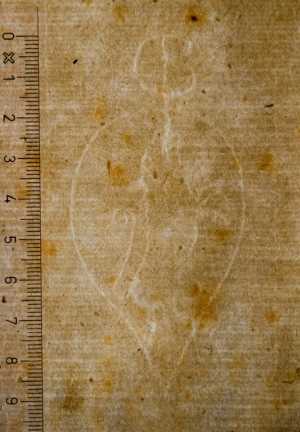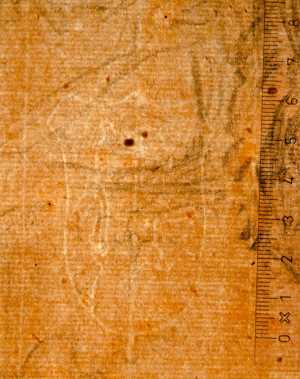Specifications
| Title | Judicial Scene |
|---|---|
| Material and technique | Black chalk |
| Object type |
Drawing
> Two-dimensional object
> Art object
|
| Location | This object is in storage |
| Dimensions |
Height 222 mm Width 274 mm |
|---|---|
| Artists |
Attributed to:
Alessandro Maganza
Previously attributed: El Greco |
| Accession number | S 30 (PK) |
| Credits | Loan Stichting Museum Boijmans Van Beuningen (former Koenigs collection), 1940 |
| Department | Drawings & Prints |
| Acquisition date | 1940 |
| Creation date | in circa 1595-1620 |
| Watermark | Unidentified quadruped animal (lion?), rampant, in a shield (61 x 43 mm, on P3 of 6P, vH); in the removed mount: Unidentified quadruped animal (lion?), rampant, in a drop-shaped shield, surmounted by Letter G (90 x 43 mm, on P4 of 8P, vH, in the center). [see image] |
| Inscriptions | '10' (on removed mount, lower right, pen and brown ink), 'from coll. of Sr. A. Alison' (on removed mount, lower right, pencil) |
| Collector | Collector / Franz Koenigs |
| Mark | F.W. Koenigs (L.1023a on removed mount) |
| Provenance | Sir Archibald Alison (1792-1867), Glasgow (in an album); Art dealer Luigi Grassi (1858-1937, L.1171b), Florence (from the album, probably dismembered by him); Franz W. Koenigs (1881-1941, L.1023a), Haarlem, acquired in 1930 (attributed to El Greco); D.G. van Beuningen (1877-1955), Rotterdam, acquired with the Koenigs Collection in 1940 and donated to Stichting Museum Boijmans Van Beuningen |
| Exhibitions | none |
| Research |
Show research Italian Drawings 1400-1600 |
| Literature | Byam Shaw 1976, under no. 840 (A. Maganza); Byam Shaw 1983, under no. 252 (A. Maganza); Paris 1996, under no. 61; Loisel 2004, p. 53, fig. 67 (Agostino Carracci) |
| Material | |
| Object | |
| Geographical origin | Italy > Southern Europe > Europe |
| Place of manufacture | Vicenza > Veneto region > Italy > Southern Europe > Europe |
Do you have corrections or additional information about this work? Please, send us a message

























